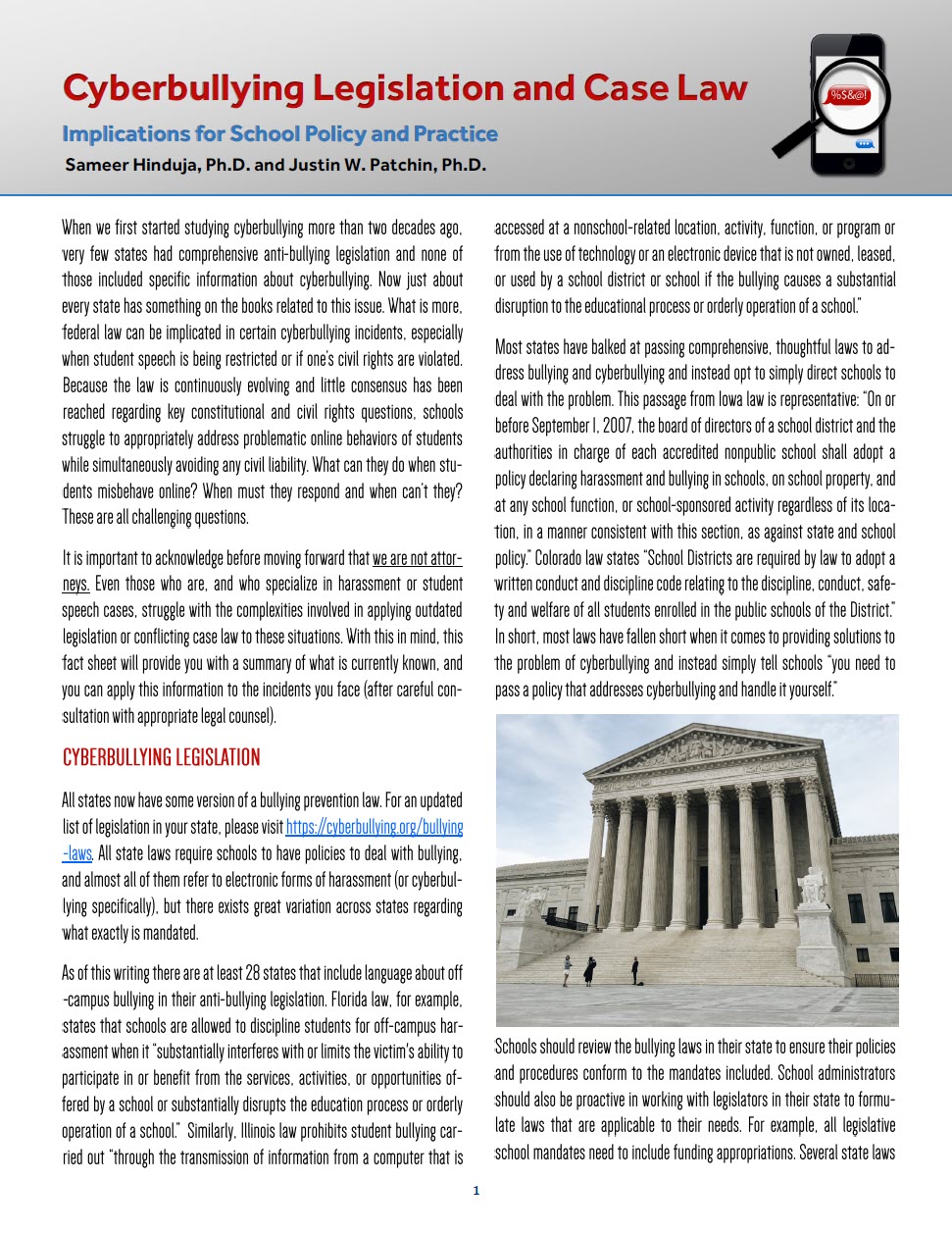
Cyberbullying legislation and case law: Implications for school policy and practice
This Fact Sheet provides a summary of important court cases and pending legislation that can help school administrators evaluate and improve their current cyberbullying policies and procedures. Hinduja, S. & Patchin, J.W. (2024). Cyberbullying legislation and case law: Implications for school policy and practice. Cyberbullying Research Center. Retrieved [insert date], from https://cyberbullying.org/cyberbullying-legal-issues.pdf Download PDF
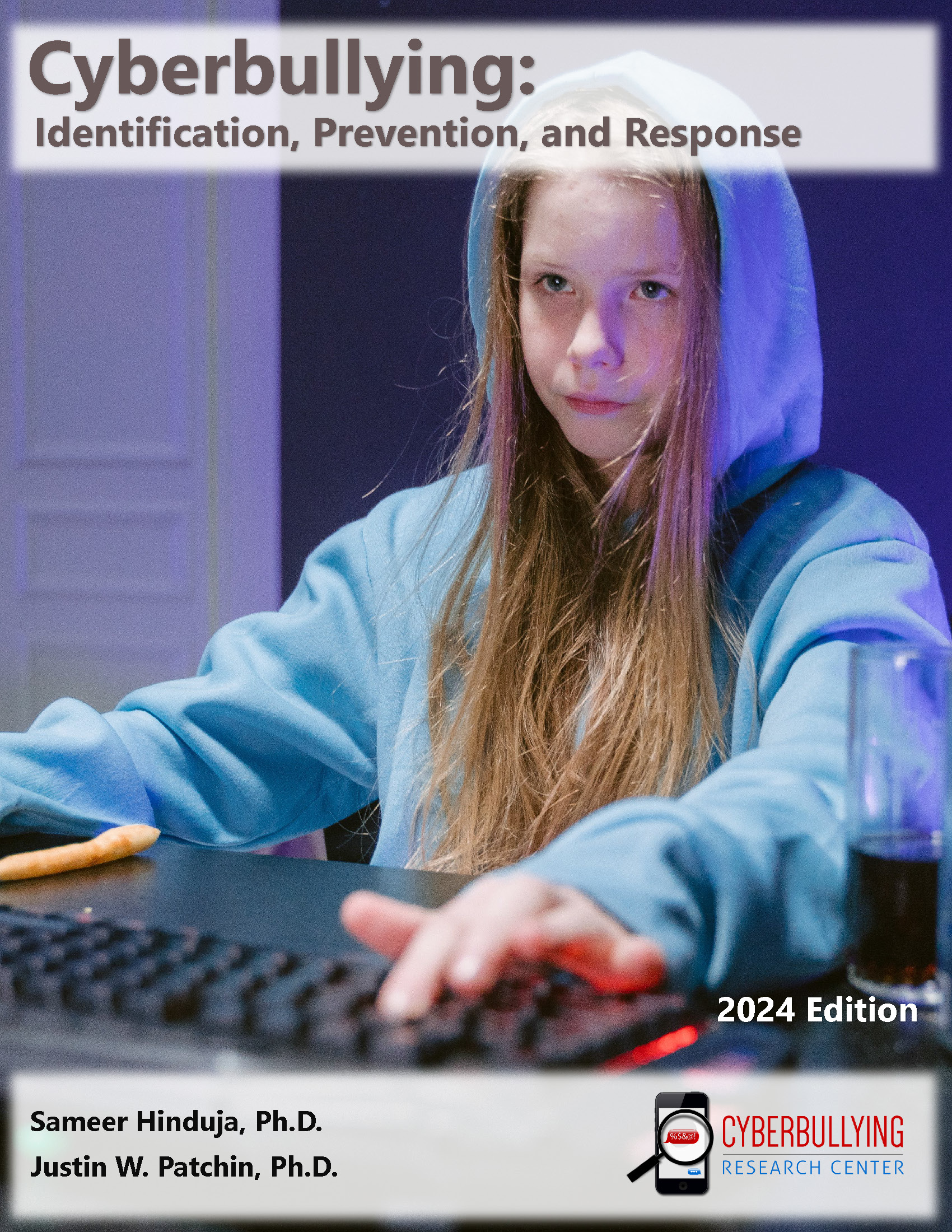
Cyberbullying Fact Sheet: Identification, Prevention, and Response
UPDATED for 2024! This detailed guide is a nine-page summary – filled with as much useful information as possible – to equip educators, parents, and other youth-serving adults to spot cyberbullying, respond to it appropriately and meaningfully, and to prevent its future occurrence among those they care for. If you only have time to read […]
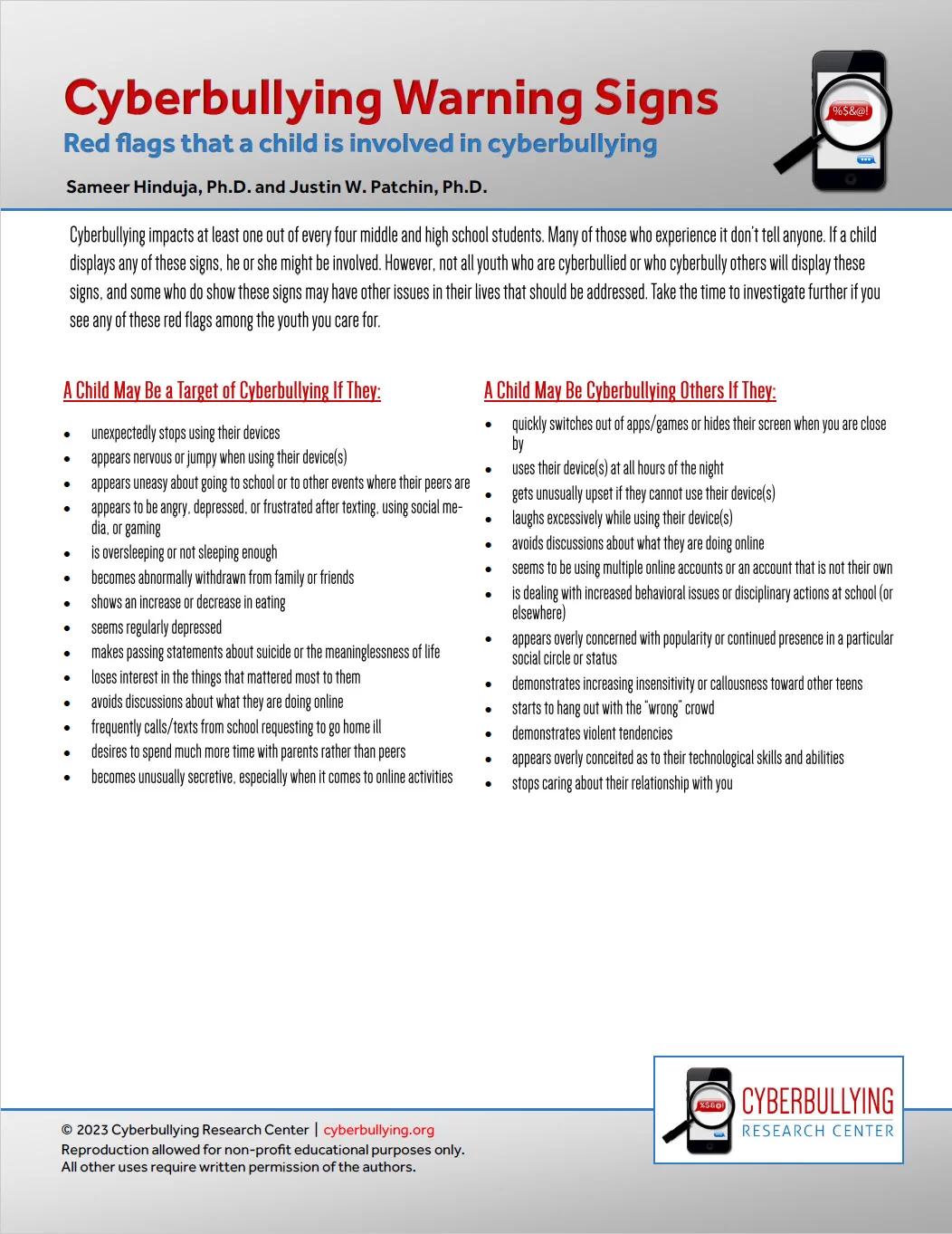
Cyberbullying Warning Signs
Cyberbullying impacts at least one out of every four middle and high school students. Many of those who experience it don’t tell anyone. If a child displays any of these signs, he or she might be involved. However, not all youth who are cyberbullied or who cyberbully others will display these signs, and some who […]

2021 Cyberbullying Data
This study surveyed a nationally-representative sample of 2,546 middle and high school students between the ages of 13 and 17 in the United States. Data were collected in April and May of 2021. Click on the thumbnail images to enlarge. Cyberbullying Victimization. We define cyberbullying as: “Cyberbullying is when someone repeatedly and intentionally harasses, mistreats, […]
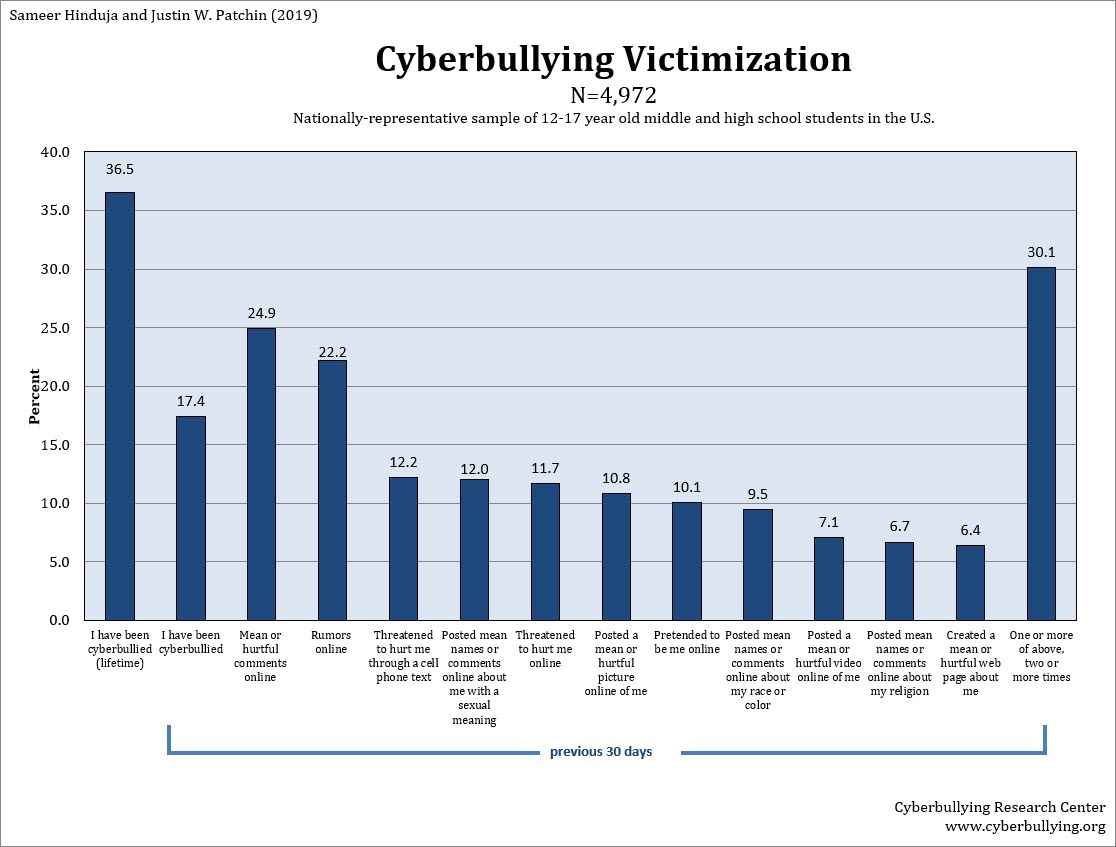
Cyberbullying Data 2019
Presents data on cyberbullying from a 2019 national survey of middle and high school students in the United States. This study surveyed a nationally-representative sample of 4,972 middle and high school students between the ages of 12 and 17 in the United States. Data were collected in April of 2019. Click on the thumbnail images […]
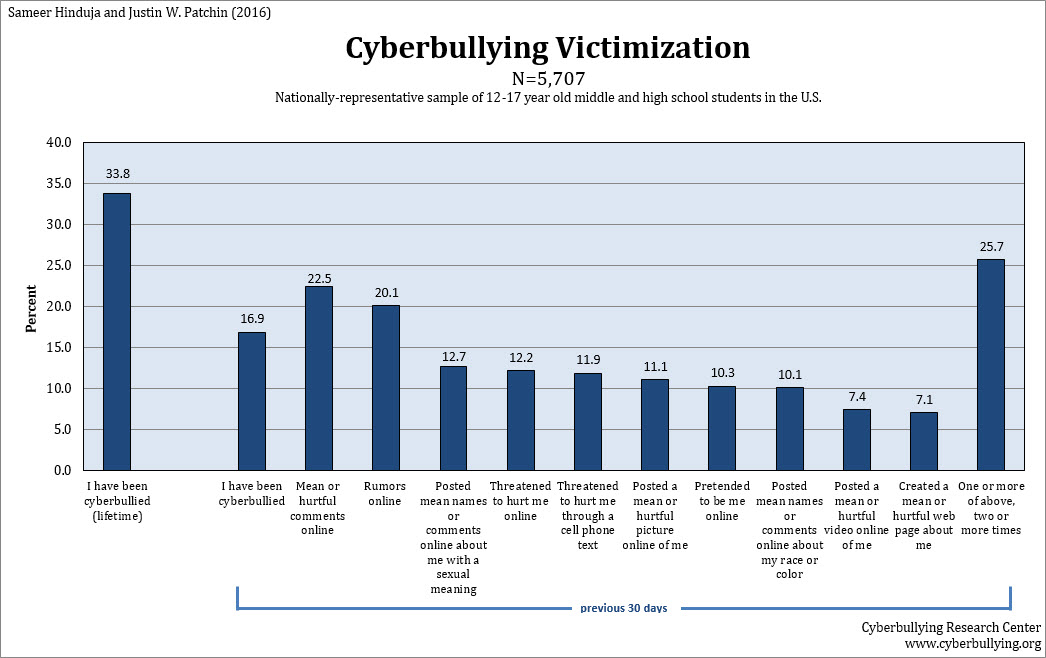
2016 Cyberbullying Data
This study surveyed a nationally-representative sample of 5,700 middle and high school students between the ages of 12 and 17 in the United States. Data were collected between July and October of 2016. Click on the thumbnail images to enlarge. Teen Technology Use. Cell phones and other mobile devices continue to be the most popular […]
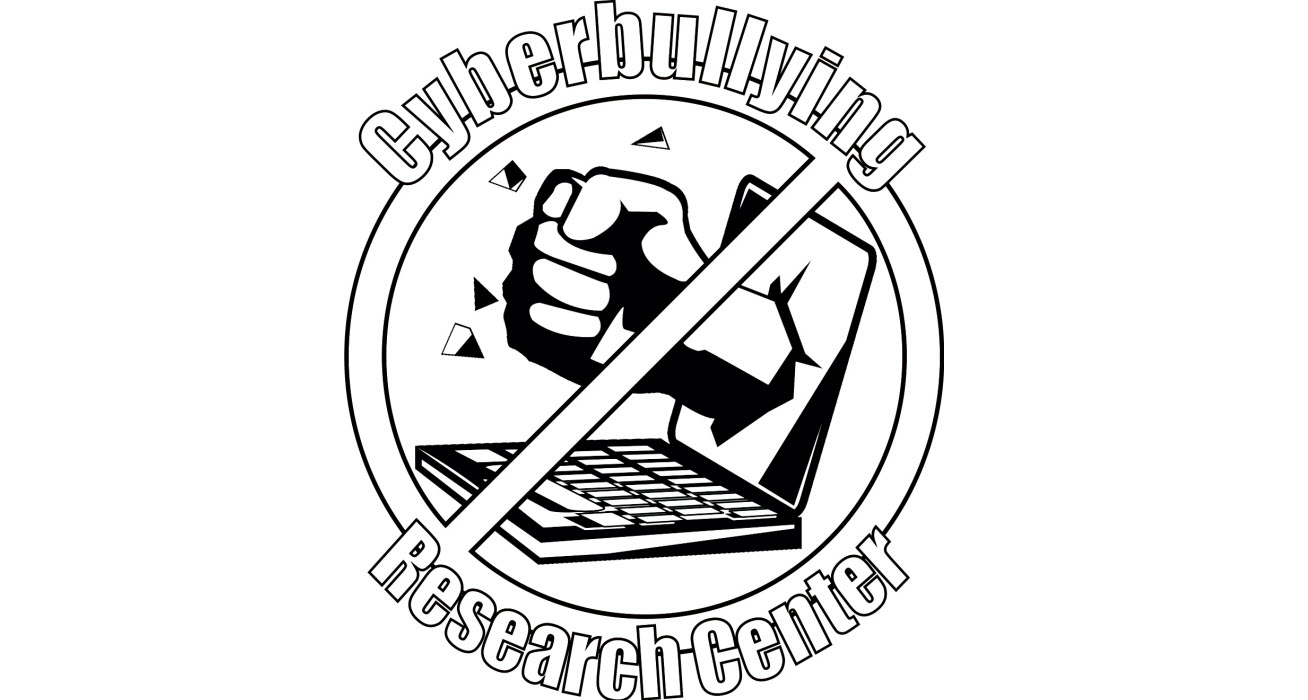
Cyberbullying Research: 2013 Update
It’s been nearly three years since I posted a summary of the current state of cyberbullying research on this blog. That post was inspired by my concern that no researchers were included on a panel that testified to the Committee on Education and Labor’s Subcommittee on Healthy Families and Communities on the topic of how […]

Decoding Your Digital Footprint
When individuals are online, they are assigned an Internet Protocol (IP) address by their Internet service provider (e.g., Earthlink, AOL, Qwest, Comcast, their school) or cell phone service provider (e.g., Sprint, AT&T, Verizon). This IP address is unique and is bound to a person’s current online session—whether it is via a computer, cell phone, or […]
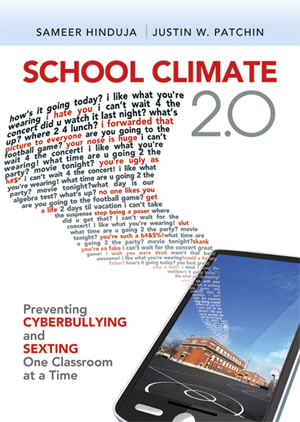
Educating Students about the Consequences of Cyberbullying and Sexting
Quite often when you investigate a cyberbullying or sexting incident, you will come to learn that the “offending” parties didn’t fully understand the consequences of their actions or how what they did could have ever resulted in the trouble that they are now facing. Maybe they didn’t think that what they were doing was that […]
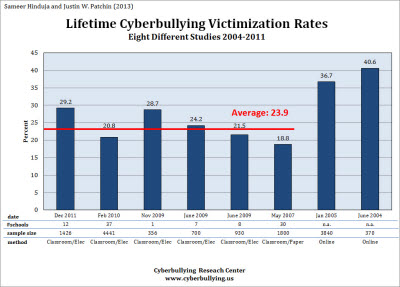
Cyberbullying: Neither an Epidemic nor a Rarity
If you pay attention to the news reports of cyberbullying incidents (like we do), you would probably think that these inappropriate online behaviors are happening at epidemic levels. When we first started studying cyberbullying over a decade ago, Sameer and I would literally print out any news article we saw that talked about a cyberbullying […]

